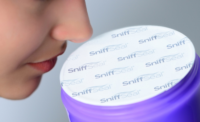Technology leadership helps ExxonMobil Chemical deliver solutions that enable innovation and can add value across the entire value chain, including opportunities to improve performance, reduce total costs and help meet the growing trends for sustainable solutions. Technology leadership created metallocene-based products: Enable metallocene polyethylene (mPE) and Exceed mPE resins and Vistamaxx propylene-based elastomer (PBE). Customers are using these polymers for a broad range of flexible packaging applications.
Thinner, Stronger Packaging Films
Enable mPE and Exceed mPE resins and Vistamaxx PBE may allow converters to develop downgauged flexible films with excellent mechanical properties and sealing strength which can then enhance package integrity. This makes these brands ideal for a broad range of film applications in consumer and retail packaging, industrial packaging and agricultural films.
ExxonMobil Chemical completed a life cycle assessment (LCA) of heavy duty sacks used for packaging powdered construction products, like cement premix. It evaluated the environmental impact profile of 25 kilogram (55 pound) form fill and seal (FFS) sacks made from Exceed and Enable mPE resins compared with more conventional solutions of three-layer paper/PE/paper structures. The results, from primary data provided by ExxonMobil Chemical and NORDFOLIEN GmBH with additional data from the Ecoinvent life cycle inventory database, show superior performance for FFS mPE film sacks when compared to paper sacks. These become more significant when packaging damage and product loss are considered. Based on a five percent product loss rate due to paper packaging damage, FFS mPE sacks deliver:
- Lighter weight than their paper counterparts, contributing positively to the environmental footprint (less use of resource and lower transportation emissions). Currently, an FFS mPE sack typically weighs 65 grams, while a paper equivalent is 83 grams or more.
- A cumulative energy demand over their entire life cycle, from raw material extraction to end of life, that is only 39-54 percent that of paper sacks
- Total Green House Gas emissions that are about 22-25 percent less than those of paper sacks
Adding Vistamaxx PBE to an existing stretch hood film formulation being used at an ExxonMobil Chemical plant in Belgium delivers up to 16% reduction in material use. Tests undertaken by ESTL nv of Belgium indicate that 25kg sacks of polymer pellets are kept secure and stable on the pallet. The modified 3-layer film structure comprises 100% Exceed mPE resin in the outer layers and 15% Vistamaxx PBE and 85% Nexxstar EVA copolymer resin in the core. The Exceed mPE resin-based skin layers deliver toughness, improved resistance to hole formation and tear propagation in addition to excellent optical properties. Nexxstar EVA copolymer resins provide high holding force and stretch capability. The addition of Vistamaxx PBE in the core layer allows elastic recovery to be enhanced. The film met the application’s stretch ratio target of 55% and was thinner than the original film, having been downgauged from 100 microns to 90 microns.
Innovation for Customer Solutions
ExxonMobil Chemical’s technology leadership, application expertise and technical support can help to deliver high-performance products that meet customer needs. Harnessing technology leadership, supported by locally-driven market-facing knowledge that leverages global capability, and using it to spark innovation across the value chain is helping to add value to customer solutions.
ExxonMobil Chemical will be demonstrating how its technology leadership can enable innovation across a range of applications at its Chinaplas booth, hall 10.2 booth A41, and via a number of machine runs at the booths of leading machine manufacturers.
ExxonMobil Chemical
(281) 870-6050

